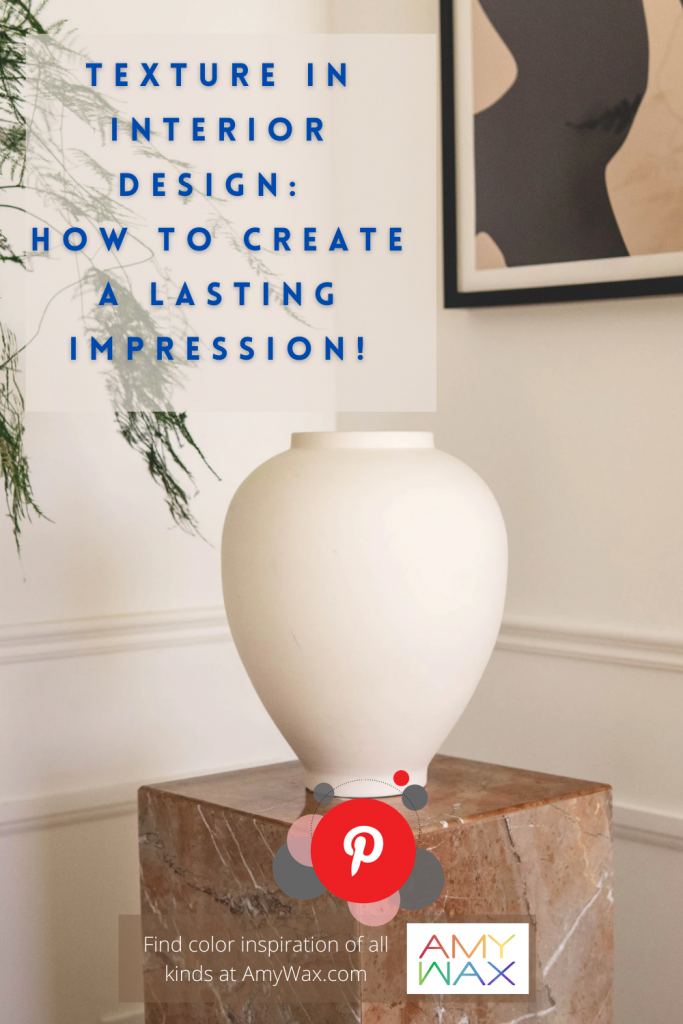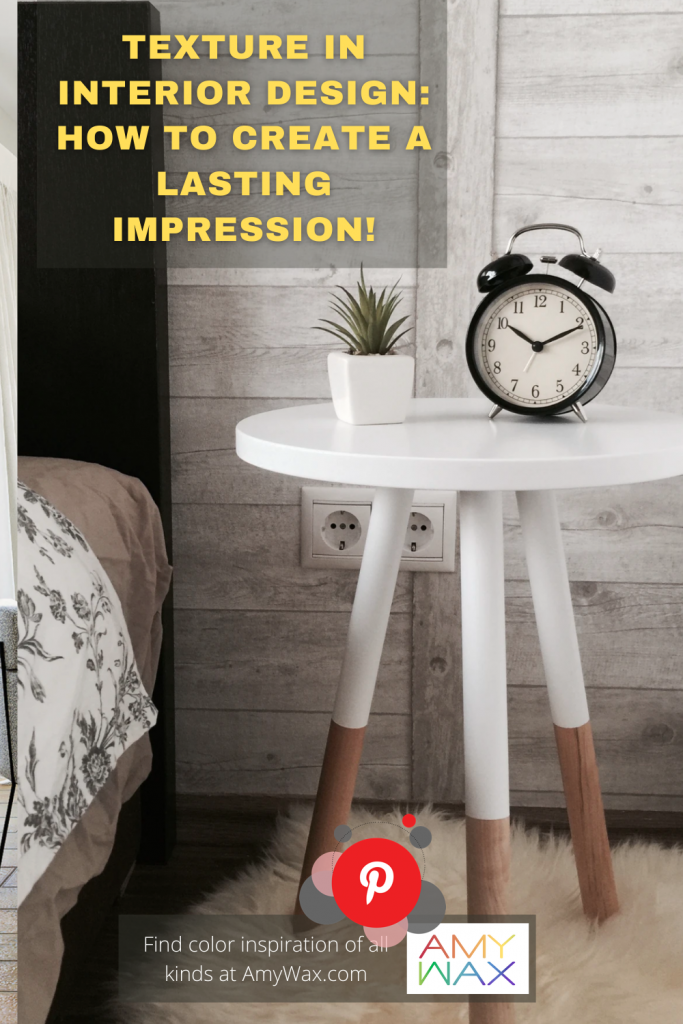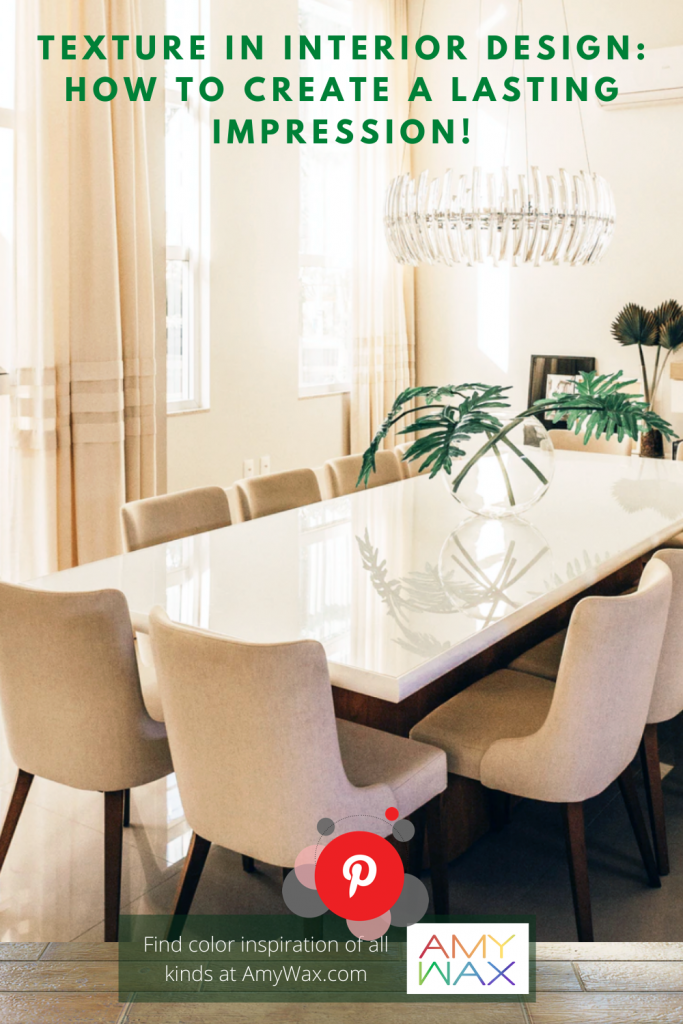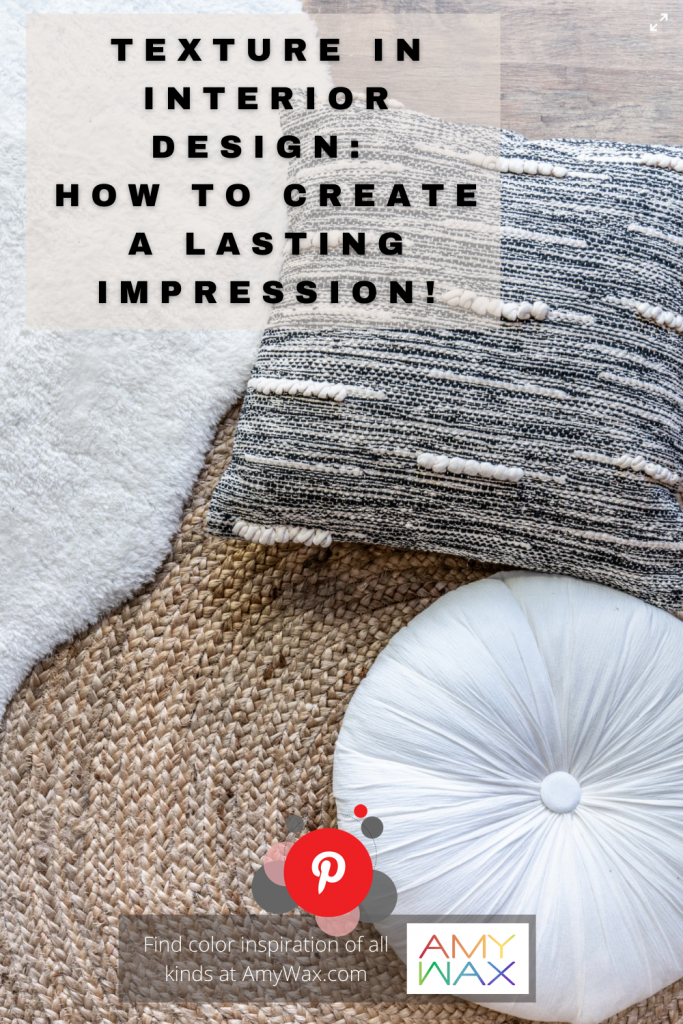As a color expert and color consultant, my content almost always gravitates towards my favorite design tool, color! However, in this article, I’d like to mix things up a little bit and talk about the power of texture in interior design. We often think of color, shape, style, size, etc..when considering interior design features in our homes. But, texture is an extraordinary design feature that can change all other features around it!
Why Should You Consider Texture?
If I were forced to summarize what the interior design feature texture can add to a space, I would use two words: dynamics and dimension.
A major design flaw that can happen with interior spaces is that all surfaces and colors blend into the same indistinguishable/amorphous look. This can happen entirely by accident, but it does happen quite often if homeowners don’t pay close attention to not only the colors of what makes up their design, but the features of each element in the space.
Before you know it, your matte white refrigerator blends right into your white marble countertops and light-gloss dishwater. The soft beige sofa is indistinguishable from the muslin pillows and sisal rug. When we choose colors and textures we like, our style choices can easily blend together. Sometimes it is great to be consistent, sometimes not so much.
When not considered, a space feels almost dimensionless because of the lack of textured variance, lack of contrast between the elements in the room, and lack of color variety in what you have added into your home. It offers nothing dynamic or interesting to the eye. A room without texture honestly just feels flat. That is why it’s so important to consider different textured surfaces when designing interior spaces.
Learn About the First-Impression Impact the Right Exterior Paint Colors Can Have!
Texture In Interior Design: Endless Options to Choose From
I know the prospect of adding yet another design feature to consider when working on your home’s interior design can seem overwhelming. As an interior paint consultant and interior designer, I’m always looking for ways to incorporate new colors and new textures; it’s a learned skill. But, with that said, I know you can develop your understanding and skillset when it comes to incorporating texture with your design schemes!
Let’s talk about some of the different ways you can incorporate textures into your home’s interior design without strife and stress!
When discussing different textures in interior design, we refer to the various surface qualities of different materials. For example, textured surfaces will range from hard to soft, bumpy to smooth, granny to silky, or even dull to shiny. Texture for fabrics will naturally have a softer texture than a natural stone countertop or 19th-century wooden bookshelf, which is why it’s so exciting to incorporate texture into the interior design. Just as there are endless variations of colors, there are endless variations of textures to choose from!
Learn How An Exterior Paint Color Consultant Can Help You Make
The Most Impactful Color Choices for Your Home!
A Simple Approach: Casual vs. Formal
One of the simplest ways of using texture in your design is thinking of the rougher textures as more rustic or casual. Think of rough hewn beams, live edge shelving, or even loosely woven pillows on your well-worn leather chair in the corner of a room. These elements conjure up a more casual feel, a space that is all about relaxing and taking it easy!
On the other hand, let’s imagine a completely polished room; fine pottery, shiny marble tabletops, fabrics that shimmer, and lighting that truly sparkles in the room. Equally comfortable, this home feels more formal in every way.
How will you be adding texture to the design of your home? I hope this blog post encourages you to look at the choices you’ve made and what textures you have selected!
The Different Ways To Use Texture in Interior Design
Another angle to think about is how different textures will result in different emotional responses to a space. As I have discussed before, it’s important to align your design choices with the emotional intentions of the space. Just as warmer or cooler colors can affect the atmosphere of a room, so can textured surfaces.
When choosing textures within your home, think of them as adding structure and mood. Smooth textured surfaces like glass, marble, finished wood, and polished metals can create a more polished feeling in the room. This effect is because smoother/shiner textures reflect more light than raised and granular textures, absorbing light and creating a heavier, warmer presence within the room.
If we imagine walking into a space, the textures will either help amplify or tone down the room’s emotions. Picture a modern kitchen with glass, marble, polished metals, and smooth, natural stone floor tiles. All of it very soft and finely finished, reflecting tons of light and bringing a calm, cool, collected sense to the area.
On the other hand, picture walking into an old study within a beautiful Victorian home; dozens of different vibrant textures catch the eye. Stunning wood furniture, rough brick fireplaces, velvet couches, love seats, and large tapestries hung along the wall. These different textures feel heavy, cozy, and absorbing; they create an intentionally weighty feel to the space that promotes a relaxing and warm mood.
By adorning your different interior spaces with textures that match the emotional intentions of the rooms, you’ll find them powerful and so helpful in creating the desired ambiance of the room.
Remember, textures help create dynamic tones and dimensionality to spaces, and when they are contrasted well against each other, the results can be breathtakingly beautiful!
What is fascinating about incorporating texture in your design is that it can be a whole room of textured pieces or a single element that makes your heart sing!
Let me know what your favorite textured surfaces are and what combinations of textures you find most harmonious for your interior design schemes!







Textures in design are so vital especially in neutral spaces. I like how you classified casual versus formal textures, as that really helps us to visualize.
Thanks Denise, you are so right about neutral spaces. The textures in the room can make such a big difference!
Such a good post Amy! I like a combination of rough and luxe, smooth and textural – much more interesting than the flatness of all the same texture!
Absolutely Linda, adding textures can add more layers of interest when it is done well!
Texture is such a key design element, especially in monochromatic spaces – i love the delineation of rustic vs formal and the idea of using texture to create emotional intention.
Thanks Janet, I agree, textures can add so much to a design, and give it more of an identity at the same time!
What a wonderful subject. I love soft and snuggly blankets and pillows near natural stone and rough wood surfaces. Or a room that is all varying shades of one neutral color with lots of different textures so the texture is what really stands out.
I agree Mary Ann, the right texture can compliment the colors or a room and add an extra layer to a great design!
Amy, what an insightful post. It is true that texture can really add to an interior and communicate the level of formality of a space.
I appreciate your comment Lisa, we communicate so many ideas with every piece we include in our designs!